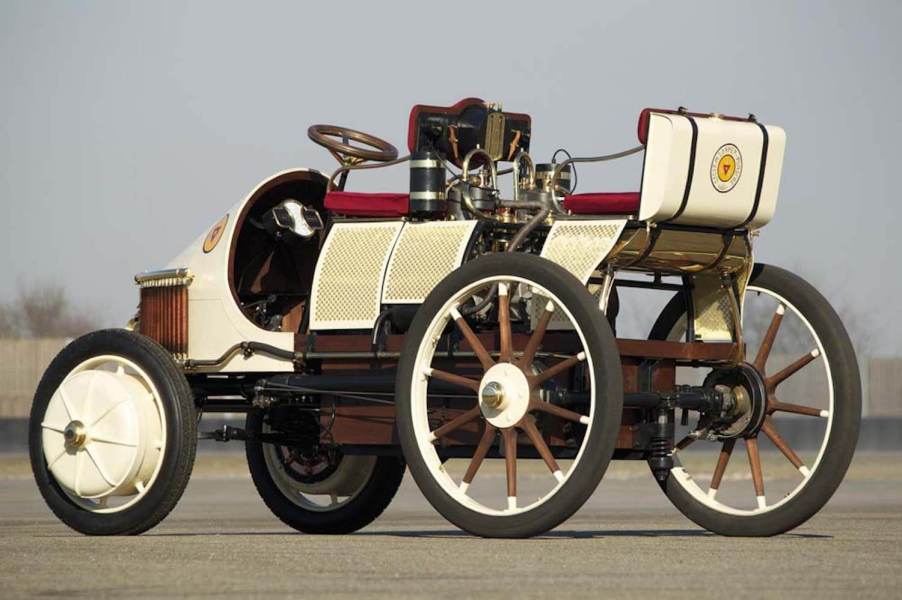
Porsche Pioneered the Range-Extended EV 100+ Years Before Ram and BMW
Range-extended EVs include the 2011–2019 Chevrolet Volt, 2013-2022 BMW i3, and the upcoming Ram 1500 REV. They offer the low-end torque and durability of an EV. But instead of a heavy and expensive long-range battery pack, they have a gasoline generator for extended trips. Range-extended EVs are nothing new: Ferdinand Porsche built the first one in 1899.
The range-extended EV is the car of the future

While governments around the world are pushing for electrification and even banning combustion, the automotive industry has concerns. The CEO of Mercedes-Benz warned that electric cars may get even more expensive due to the looming lithium shortage. The CEO of Stellantis went a step further. He said he is unsure there is enough lithium on Earth to replace every internal combustion vehicle with a long-range EV.
Until scientists discover a comparable battery chemistry, plug-in hybrids may become increasingly common. These vehicles have a traditional gasoline engine connected to a transmission that spins the wheels. They also have an electric motor large enough to power this conventional drivetrain.
The upside to PHEVs is that even 30 miles of all-electric range is enough for most drivers on most days. But the downside is that they have all the complexity of an internal-combustion car and the added complexity of an EV. A vehicle driven exclusively by electric motors has more low-end torque and fewer moving parts than a PHEV.
Enter the range-extended EV: An electric vehicle with a 30-mile battery pack would be sufficient for 90% of commuters’ daily needs. If it had a gasoline generator under its hood, it could also handle longer road trips. It would cost less per mile, even in gasoline mode. It would also likely last longer than a traditional, internal combustion vehicle.
Ferdinand Porsche built a range-extended EV in 1899

Ferdinand Porsche was born in what is now the Czech Republic in 1875. He was fascinated by electric technology by the time he was a teenager. He and his partner Ludwig Lohner unveiled a revolutionary car at the 1900 Paris Exposition. The Lohner-Porsche featured an electric battery, in-wheel hub motors Porsche designed, and a gasoline-powered range-extender generator.
The Lohner-Porsche became known as the “Semper Vivus” (Always Alive). It was never mass-produced. But it was an early luxury car, with Porsche’s company hand-building a few yearly.
Porsche modified his design over the years. The second generation of his car had one hub motor for every wheel, making it the first AWD passenger vehicle.
Early models weighed over 2,600 pounds, so Porsche reduced the battery size. Eventually, he would wire the vehicle’s generators directly to the electric motors and do away with its electric-only range. The result would not technically be a range-extended EV, but would be a serial hybrid instead.
Just how revolutionary was the Porsche Semper Vivus?

By 1832, inventors were already experimenting with electric horseless carriages. But these vehicles used disposable batteries and were pure novelty items. A French inventor named Gustave Trouvé pioneered lightweight, rechargeable batteries. In 1881, he mounted an electric motor and rechargeable batteries on a tricycle.
Ferdinand Porsche introduced two significant innovations with his Semper Vivus. Even today, the in-wheel hub motor is the Holy Grail of the simple, reliable EV. In fact, the Lordstown startup has been attempting to perfect this design to build an “Endurance” pickup truck with fewer moving parts than any vehicle on the road. Porsche’s pioneering of the in-wheel hub motor was nothing short of revolutionary.
In addition, EVs such as Trouvé’s tricycle had so little range that they were highly impractical. Modern EVs address this problem with large, lithium-ion batteries. But before this technology existed, Porsche had the foresight to address range anxiety with an onboard generator.
Next, learn about Dodge’s forgotten first hybrid SUV or see a modern Porsche Semper Vivus replica yourself in the video below:






